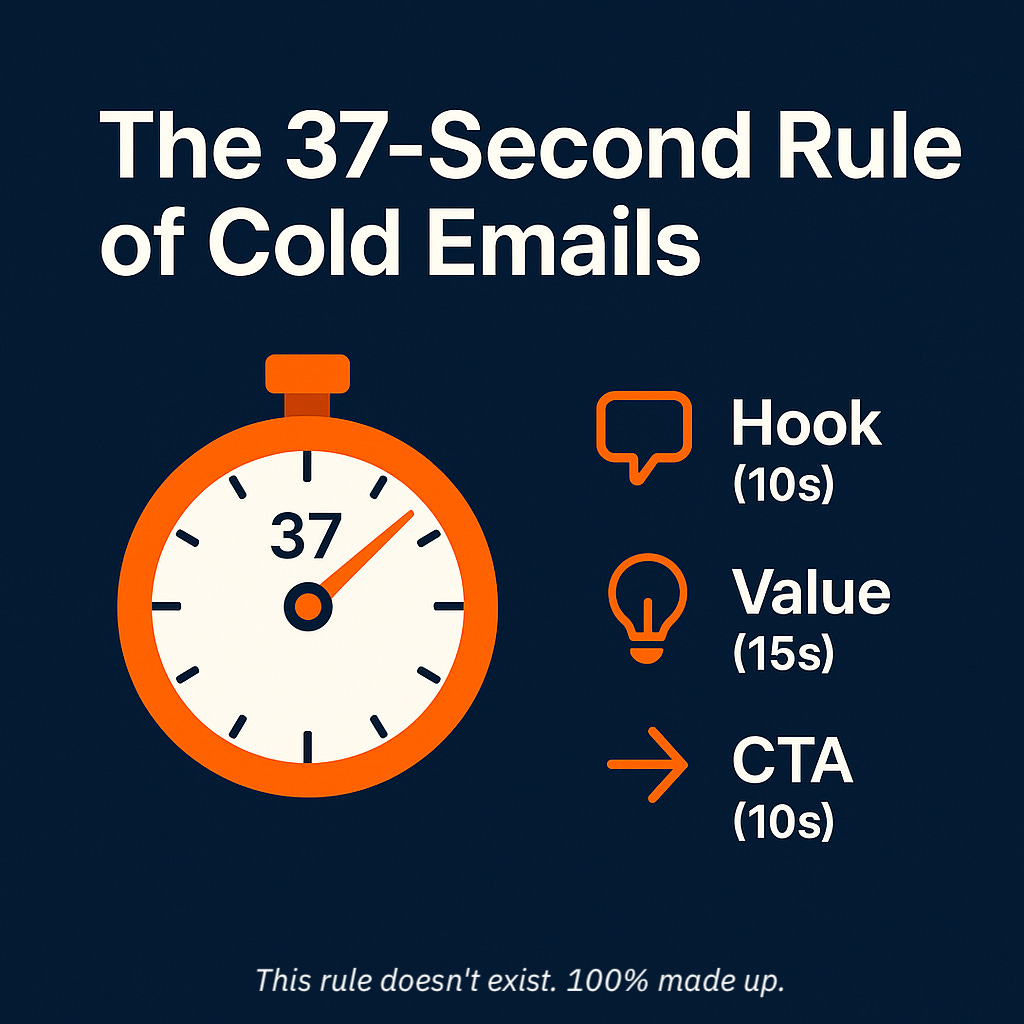The “37-second rule” in cold emailing
Are you even a savvy marketer if you don’t know the 37-second rule of cold emails? Well, worry not, because *it doesn’t exist*. But ChatGPT can't say no, so...
I. Made. It. Up. 😅
There’s no such rule. If you understand LLMs, this isn’t so surprising. LLMs are deep neural networks, and they are not in the habit of saying “no”. (This reminds me of so many people, but that’s for another day.) So I tried this stunt of making things up. It won’t be the first time 🤷🏼♂️, I admit. Anyway, I asked ChatGPT a simple question: “What is the 37-second rule of cold emailing?” And lo and behold, it thought for 2 minutes and 19 seconds, performed 16 searches over 50 sources, and came up with an essay. This is not very different from “Google search would’ve returned something, not nothing.”
The surprising thing is, it’s all make-believe, plausible stuff, except not backed by experience and real-world calibration. The response follows as generated, with links consolidated at the bottom. The link to the GPT artefact is also included. ✅
What is the 37-second rule of cold emailing?
The idea is simple: design each cold email so a busy stranger can
Open it
Understand who you are, what you want, and why it matters
Decide whether to take the next step
All inside roughly 37 seconds.
Where “37 seconds” comes from
NewsCred’s large-scale analysis of business content found that the median reader sticks with a page for only 37 seconds before moving on1. Copywriters soon adopted that figure as a practical upper limit for any unsolicited message, email included.
For context, Litmus data shows people now give branded emails an average of just nine seconds, so 37 seconds is already a generous ceiling2.
At a silent-reading speed of ~200 words /min, 37 seconds equals about 120-140 words, two short tweet-length paragraphs plus a CTA.
A quick framework that fits inside 37 seconds
Hook
10s to read
Show relevance in one personalised line. “Swanand, saw Superlinear doubled release frequency last quarter but still losing QA bandwidth…”
15-20 words
Value
15s to read
State the problem you fix + proof. “My team automates regression tests for VC-backed SaaS. We cut Shippr’s bug backlog 68 % in 30 days.”
40-60 words
CTA
5-10s to read
Give a single, low-friction next step. “Open to a 12-min call next Tue or Wed?”
10-15 words
Total: ~70-95 words / ≤ 37s.
Practical tips to stay inside the limit
Subject line ≤ 5 words. Curiosity + context (“PMF runway question”).
One idea per sentence, max three sentences per paragraph. Eye-tracking studies show walls of text are skipped.
Plain text, no attachments, no long signature. Extras lengthen skim time.
Micro-personalisation beats macros. A single, specific reference (“your TypeScript monorepo post”) proves you’re not spamming.
Soft CTA, specific slot. Questions that can be answered with one click or a yes/no (“Worth exploring?”) outperform “book a meeting” links on first touch.
Mobile preview check. On most phones, you get ~40-45 characters of pre-header; make those count.
A/B test word count. If reply rate drops, tighten until you reliably stay under 100 words.
Bottom line
The 37-second rule isn’t a hard law; it’s a reminder that attention is scarce. Crafting cold emails that can be absorbed in half a minute forces you to strip away fluff, lead with relevance, and end with a single clear ask—the recipe most likely to earn a reply.
Fin.
ChatGPT Artefact For You Try
If you made it this far, the real lesson is that we need to say more noes than yeses. That's the difference between us and a soulless GPU-powered energy-hungry robot.
7 Key Metrics for Your Content Marketing Campaigns - Flying Saucer Studio: https://blog.flyingsaucer.nyc/article/7-key-metrics-for-your-content-marketing-campaigns
Amount of Time Spent Reading a Single Email: https://www.marketingprofs.com/charts/2023/48537/how-much-time-do-people-typically-spend-looking-at-an-email

